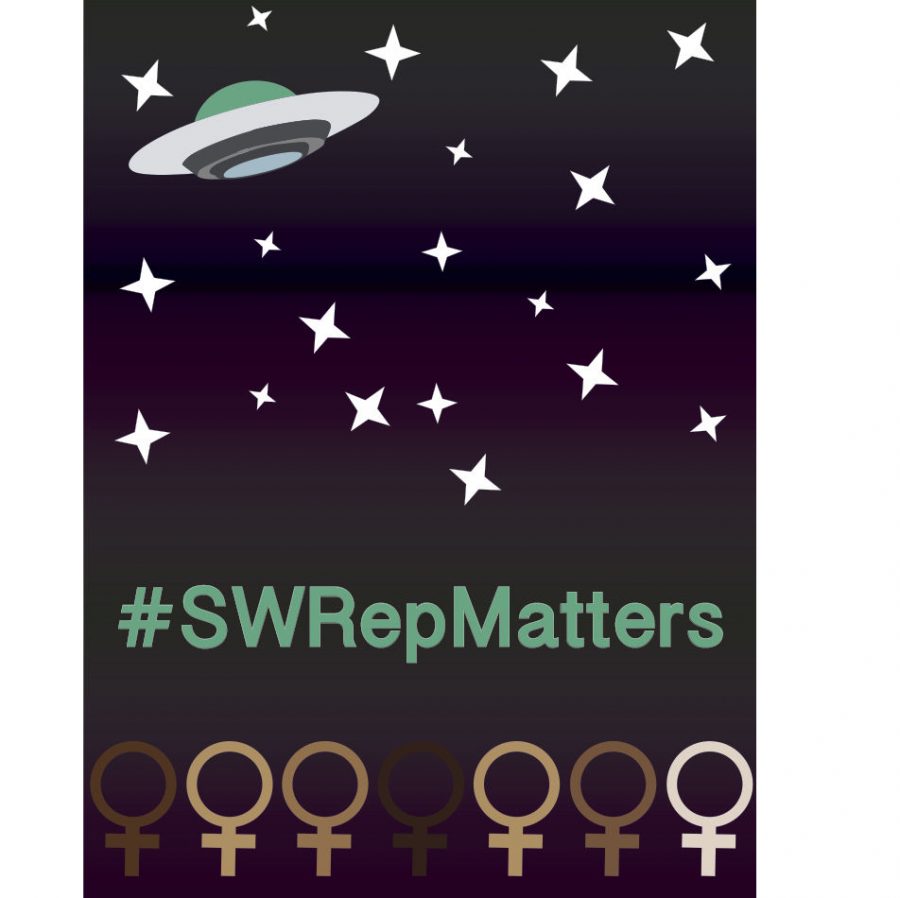Women, diversity needed across all galaxies
October 30, 2017
As Galen Erso is interrogated by Director Krennic in the opening scenes of the 2016 “Star Wars” anthology standalone “Rogue One,” Galen’s wife, Lyra, is killed by one of Krennic’s death troopers. Audiences everywhere mourned the loss of a brand new female, matriarchal character for a few seconds. Then it was on to the next scene in a galaxy far, far away.
Fans of the “Star Wars” universe are now pushing for more diverse characters by using the Twitter hashtag #SWRepMatters.
Many using the hashtag argue that more women of color characters are needed—with actual storylines and character dimension, rather than shadow characters that are introduced and killed in the same scene.
Science fiction and fantasy were once considered genres for young– adult and middle-aged men, but science fiction films are now watched by audiences of all ages and genders.
During the opening weekends for the highest grossing science fiction and fantasy films of 2015, U.S. audiences featured a mix of men and women at a 60–40 ratio, according to a 2015 article from MTV.
The original “Star Wars” trilogy was far from diverse. Billy Dee Williams and James Earl Jones were the only people of color with substantial speaking roles, and Jones only voiced Darth Vader without appearing on screen. Women were not represented much better and few, other than Carrie Fisher, had speaking roles.
In “The Force Awakens,” released in 2015, Finn’s character was played by John Boyega, a black actor. “Rogue One’s” 2016 release was a step toward more diverse characters that included Baze Malbus, Cassian Andor and Saw Gerrera. However, not only are all of those male characters, but they’re not returning because all of them were killed off.
Lack of representation extends beyond the “Star Wars” universe, however.
According to a 2014 study by Lee & Low Books, only 8 percent of the top 100 domestic grossing science fiction and fantasy films of that year star a person of color as a protagonist, and none of those were women. Two percent of protagonists had a disability, and there were no LGBTQ protagonists.
A 2014 UCLA Hollywood diversity report noted that minorities are a third of the U.S. population but remain under-represented in Hollywood. If pop culture is supposed to reflect modern society, then women and people of color need to be shown on the big screen.
“Star Wars” will be taking a step in the right direction if the rumors are true that “Episode VIII” will include a strong Asian woman as a lead character, but further improvement is needed. Other film productions need to follow the steps “Star Wars’” is beginning to take because marginalized people need to see characters who are holistic and inspiring. Children need to know their heroes look like them, and every galaxy needs diversity.








